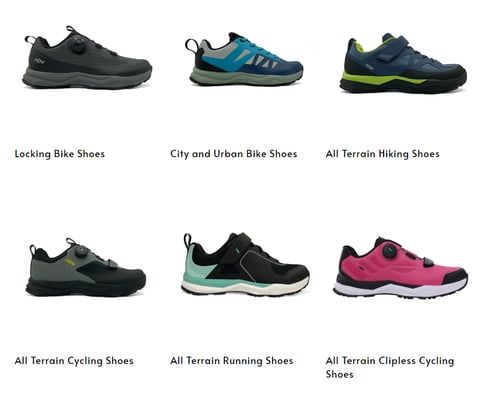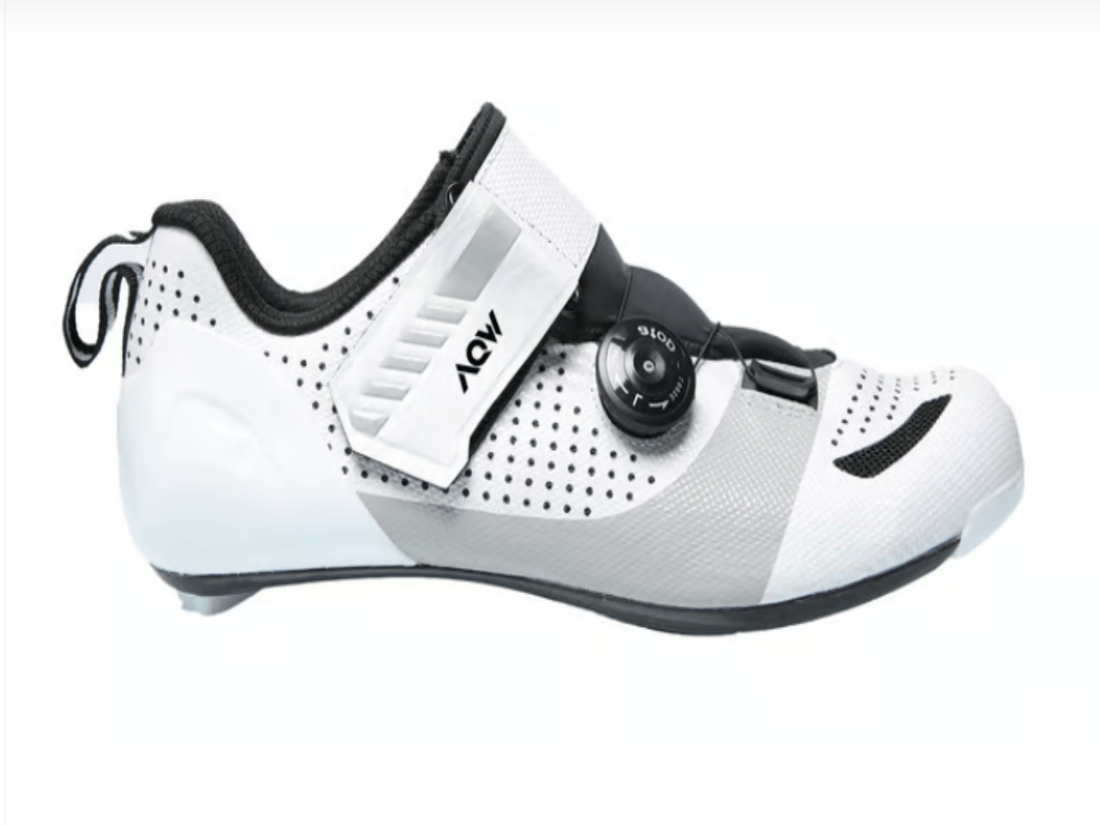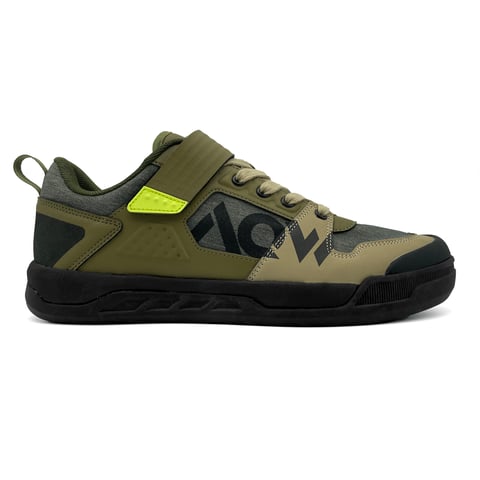The Ultimate Guide to Finding the Perfect Bike Shoes - How to Get the Right Fit
Finding the perfect bike shoes can be a daunting task, as there are so many different types to choose from. This guide will help you understand the different bike shoes styles and designs, and how to choose the right fit for your feet. We'll also take a look at the importance of comfort and performance when it comes to bike shoes. With this guide, you'll be able to find the perfect bike shoes that fit your needs and make your ride more enjoyable.

What Are Bike Shoes and Why They Are Necessary
Bike shoes or cycling shoes, as the name suggests, are specially designed for cycling. Although the domestic cycling sport is booming at present, it is estimated that a large proportion of cyclists wear a pair of sports shoes casually to go cycling. However, common sports shoes have many hidden dangers in cycling:
Most sports shoes are fastened with shoelaces, but the shoelaces are easy to loosen and shake during the riding process, and it is easy to drag with the bicycle, which will cause unexpected danger.
The soles of sports shoes are designed to contact the ground in a large area. However, the pedals of bicycles are small and mainly contact with the soles of the feet. Therefore, ordinary sports shoes are prone to slip when riding and treading, which is very dangerous.
Sports shoes are made of soft soles, which are designed to play a cushioning role when the soles touch the ground. However, in cycling, there is no need for cushioning between the soles of the feet and the bicycle pedals, but a very stable connection. Otherwise, the position of the soles of the feet and the pedals will be offset when the force is applied, which is easy to cause sports injury to the wrists.
The upper of ordinary sports shoes is made of elastic fabric, which can ensure the flexibility of the change of foot force during exercise, but cycling is the opposite. In order to ensure the force, it is necessary to step on the foot very stably, try not to shake in the shoe, otherwise it is easy to cause ankle injury.
From the above points, we can see that a pair of ordinary sports shoes is not suitable for cycling, so cycling shoes came into being.
Understanding Different Bike Shoe Styles and Designs

The following is an example of AQW company, an advanced cycling shoe manufacturer in China, to introduce the styles and designs of different types of cycling shoes at present.
The following is an example of AQW, an advanced cycling shoe manufacturer in China, to introduce the styles and designs of different types of cycling shoes at present.
MTB Cycling Shoes: they have hard, lugged bottoms that are strong and tough for traction on unforgiving surfaces. Additionally, they include a 2-bolt cleat design with a recessed hole that makes them much simpler to walk around in. MTB Cycling Shoes are fantastic since they are walkable, especially if you come across a trail portion where you need to hike. These adaptable shoes are also frequently used by gravel bikers and racers.
Indoor Cycling Shoes or Spin Shoes, like mountain bike shoes, have gripping treaded soles and walkable, recessed 2-bolt cleats.
Triathlon cycling shoes are designed for short-distance triathletes who look to save time during the swim-bike transition. The combination of one big velcro strap, a wider opening, and no inside seam will make you faster (~10 sec) while still being comfortable even though you don't wear socks. Triathlon shoes also have enhanced ventilation, which helps remove the water after the swim portion.
The comfortable Podium soft shoe will have you rocking Lange style before and after skiing.
For those living in cold parts of the world, a quality pair of winter boots is essential. They help keep your feet warm, dry and planted on the ground as you navigate months of snowy and icy conditions.
How Should Bike Shoes Fit - Tips for Determining the Perfect Fit
The importance of bike shoes for cyclists should be self-evident, which will directly affect the quality of your riding experience, but many cyclists are not very clear about how to choose the right fits for themselves.
In fact, there are only three requirements: comfort, functionality and fashion!
First of all, we have to make clear a question: What is the difference between cycling shoes and ordinary shoes you wear every day?
Of course, apart from the difference in function, it goes without saying that everyone on earth knows this. In addition, the biggest difference is the hardness of the soles. Because the rider needs to transmit the force to the pedal through the riding shoes, in order to reduce the loss of force in this process, the stronger the hardness of the soles, the higher the efficiency. If the soles are elastic or soft, the force will be absorbed by a part, and you will have more effort when treading.
Another obvious difference is the self-locking pedal. A large number of tests show that the combination of self-locking shoes and self-locking pedals greatly improves the efficiency of energy transmission. At the same time, athletes can also adjust their posture in this way, better control their muscle coordination, and thus play a better role.
Before choosing shoes, you should know what you want to play with them most of the time, that is to say, you should know what kind of cycling you do most often. Do you often take a folding car to the suburbs on weekends? Or riding a mountain bike on the local challenging mountain road? Or are you already a member of a road team?
The ability of self-locking to resist bumps is strengthened, especially when high-speed bumps require you to ride in the air or the center of gravity needs to be behind when you go downhill in high-speed bumps, the hard frame XC mountain bike with poor shock absorption system is likely to bump your foot off, so you will definitely fall.
In terms of performance, for riders in strong bumps, generally those without self-locking system shoes should slow down and put their feet on the pedal, because if they continue to pedal, they are likely to be knocked off and fall. At this time, you can see someone's hips hanging in the air and their legs accelerating past you, and you will be very depressed.
However, the bicycle will accelerate suddenly on the half slope or before the finish line. People who use the self-locking device to ride the bicycle can be said to have the strength of both legs, stepping on one foot and lifting it violently on the other foot, which will make people without the self-locking system quickly feel weak or weak in acceleration.
The advantage of using self-locking bike shoes for long-distance cycling is not to mention that it can change the distribution of the strength of the legs, and the legs of the rear leg can also play a certain role in the lifting, which makes cycling more difficult to fatigue and the high speed lasts longer.
A very important part of the self-locking cycling shoes is actually in the sole, because self-locking shoes usually do not bend, which can prevent the pedal force from being consumed in the bending of the arch material, nor can it be conveyed to the pedal in a larger proportion, virtually every foot is playing a greater efficiency.
Of course, lock-type riding shoes also make cyclists have some misunderstandings.
- The muscle group and skeletal structure of the human leg are very suitable for pedaling, but not for lifting and pulling.
Answer: Self-locking is not mainly about lifting, but about making the other foot pedal faster without leaving the pedal. That is to say, self-locking is required for faster pedaling.
- Self-locking helps to increase the frequency of stepping, so athletes must use it.
Answer: Wrong. Cycling determines that only by increasing the frequency of pedaling can we reduce consumption. However, pedaling at high frequency is easy to slip and cause serious injury, so we can lock our feet. Self-locking is widely used for cycling enthusiasts, not only athletes. In fact, there are few athletes (including Triathlon) engaged in cycling sports on this planet.
- Learning to use self-locking requires a long practice process. Only in a place without obstacles can you continuously practice pedaling and pulling, and learn how to correctly pedal and pull to complete a smooth rotation.
Answer: Yes, it takes 3-6 months to learn self-locking normally. Many people who have just locked themselves are not reliable in their evaluation of self-locking. There are coaches of single teams in China who require new players to practice self-locking on the basketball court for two months. It is very labor-saving to draw the circle very round before going out for long-distance riding. Therefore, the evaluation of people who have not used self-locking for more than half a year is not referential.
- In urban areas with pedestrians and on the streets, it is generally difficult to ensure that you can ride without stopping. Self-locking plays a small role, and it is easy to fall off the car without unlocking in time, causing injuries to people and cars.
Answer: According to the third point, only those who wear self-locking to show off, not those who really practice self-locking technology, will appear in the streets that cannot be unlocked. A car friend who is trained in self-locking is completely accustomed to unlocking.
- Locking shoes on a bicycle is not conducive to walking, especially on the road. Non-athletes ride around to see if they want to get off and walk.
Answer: Self-locking shoes are used for cycling, not for walking.
Once you know what kind of cycling you want to play, you can start to choose the right fit for your bike shoes according to your needs.re
For more details, please contact us by the following information:
Tel: +86 59582662904
E-mail: [email protected]
Quanzhou, Fujian, China


